I had said that the mudguards (fenders to our American buddies) sat way too high above the front wheels and so I had to lower the cab to get them to fit right. Well, yes I was kinda right IF the ModellTrans V3000 kit had been an early type V3000 with the large rounded mud-guards...Only, it's not!
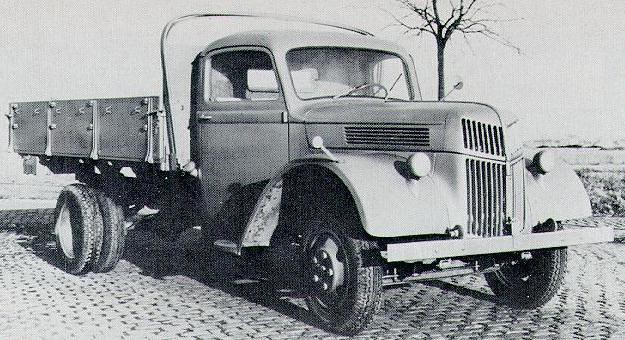 |
| A German Ford-Werkes V3000S model. |
As you can see from the above photo the wheel-arches are, indeed, quite high above the wheels (as with the ModellTrans model). It is not a mistake, even if it does look a little strange.
Unfortunately this causes me a little problem. Finland did not use the German production model of the V3000, much less this simplified model, but rather they used the American production model with the rounded fenders. Double drat!
Left: A very nice example of an American production Ford V3000. You can tell it's a US model because of the split windscreen. The Germans used a single piece windscreen.*
So, my friends, it would be wrong to use the ModellTrans conversion if you want to make a model of a V3000 in Finnish use! (Incidentally the Germans used both early and late models with both types of mud-guards. But the V3000s in Allied use - American, British, Australian, etc - did not have the simplified mud-guards. So it's a good way to tell them apart.)
So, I will have to modify my V3000's mud-guard's shape using Milliput to make it more rounded.
Generally, everything is starting to come together and I'm even glad I did do the additional surgery on the cab seats as the cab now sits more securely on the chassis because of this.
Next: Base coats and the flatbed.
* An interesting and amusing fact. The photo of the American production Model is courtesy of '9th Reenactment Society' web site. Just to prove that the issue regarding the confusion between V3000 production types isn't just a problem for modellers they have used this American V3000 and repainted it in German colours. They mention in their text on their site that the variants are 'identical', but of course they weren't. They neglected the fact that only the American production models had the split screen! Of course, they could argue that their example was one of the many V3000s captured from the Dutch in May 1940, as the Dutch models were based on the American design. Confusing?
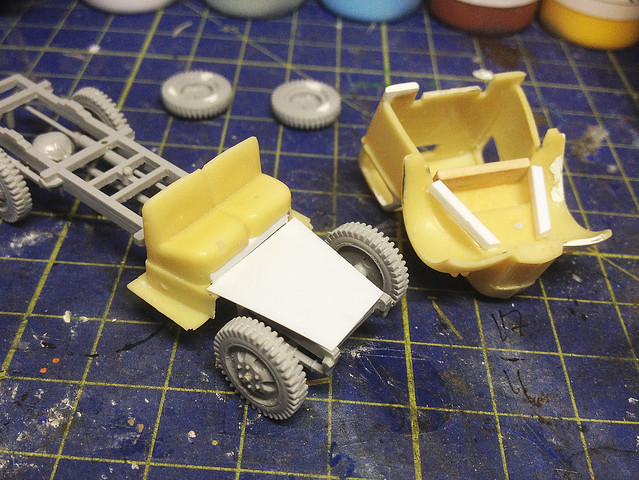
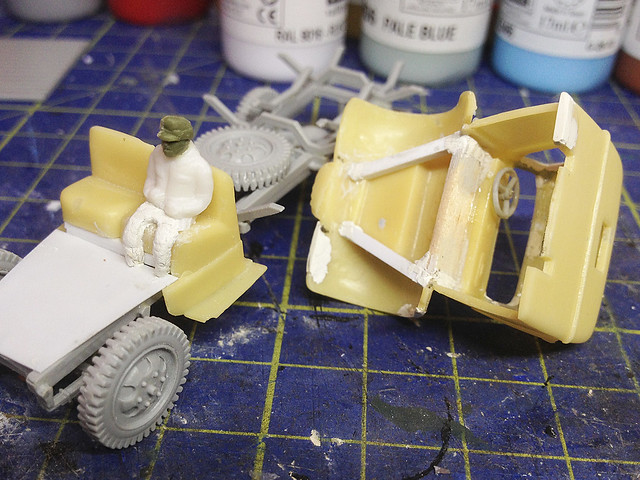

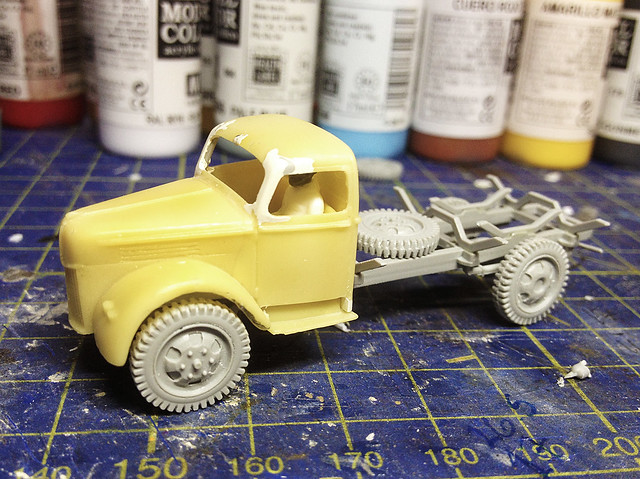
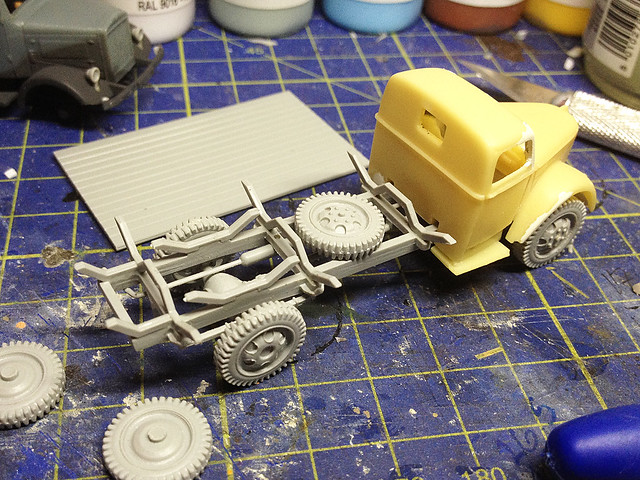
No comments:
Post a Comment